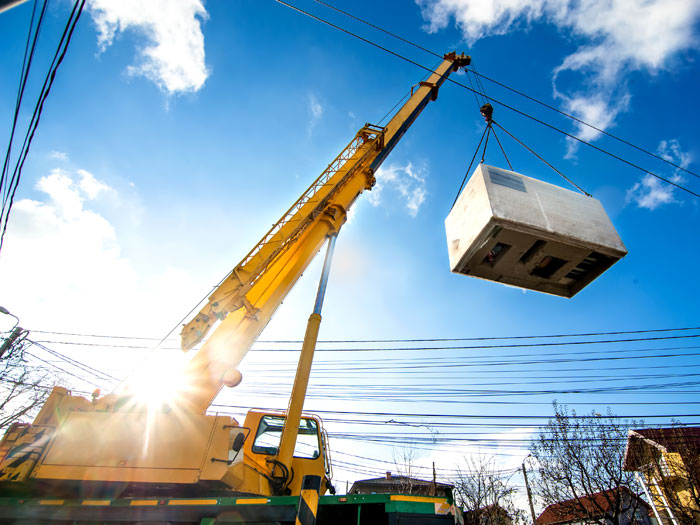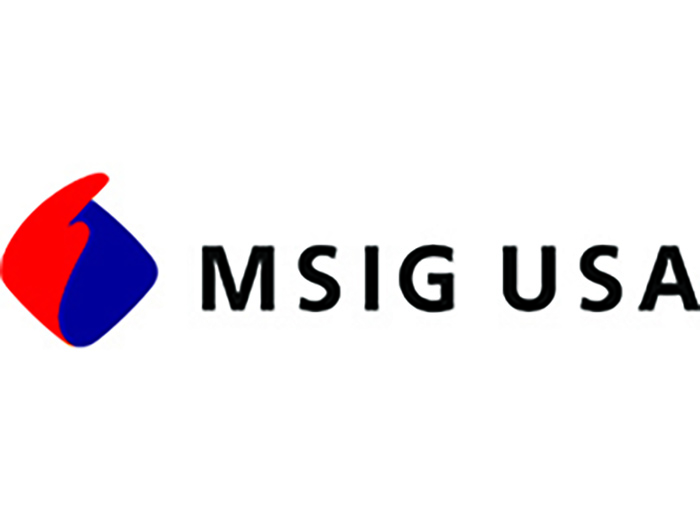Sponsored: Lexington Insurance
Handling Heavy Equipment Risk with Expertise

What happens to a construction project when a crane gets damaged?
Everything comes to a halt. Cranes are critical tools on the job site, and such heavy equipment is not quickly or easily replaceable. If one goes out of commission, it imperils the project’s timeline and potentially its budget.
Crane values can range from less than $1 million to more than $10 million. Insuring them is challenging not just because of their value, but because of the risks associated with transporting them to the job site.
“Cranes travel on a flatbed truck, and anything can happen on the road, so the exposure is very broad. This complicates coverage for cranes and other pieces of heavy equipment,” said Rich Clarke, Assistant Vice President, Marine Heavy Equipment, Lexington Insurance, a member of AIG.
On the jobsite, operator error is the most common cause of a loss. While employee training is the best way to minimize the risk, all the training in the world can’t prevent every accident.
“Simple mistakes like forgetting to put the outriggers down or setting the load capacity incorrectly can lead to a lot of damage,” Clarke said.
Crane losses can easily top $1 million in physical damage alone, not including the costs of lost business income.
“Many insurers are not comfortable covering a single piece of equipment valued over $1 million,” Clarke said.
A large and complex risk requires a sophisticated claims approach. Lexington Insurance, backed by the resources and capabilities of AIG, has the underwriting and claims expertise to handle such large claims.
“Cranes travel on a flatbed truck, and anything can happen on the road, so the exposure is very broad. This complicates coverage for cranes and other pieces of heavy equipment. Simple mistakes like forgetting to put the outriggers down or setting the load capacity incorrectly can lead to a lot of damage.”
— Rich Clarke, Assistant Vice President, Marine Heavy Equipment, Lexington Insurance
Flexibility in Underwriting and Claims
Treating insureds as partners in the policy-building and claims process helps to fine-tune coverage to fit the risk and gets all parties on the same page.
Internally, a close relationship between underwriting and claims teams facilitates that partnership and results in a smoother claims process for both insurer and insured.
“Our underwriters and claims examiners work together with the broker and insured to gain a better understanding of their risk and their coverage expectations before we even issue a policy,” said Michelle Sipple, Senior Vice President, Global Head of Inland Marine, Lexington Insurance. “This helps us tailor our policies or claims handling to suit their needs.”
“The shared goals and commonality between underwriting and claims help us provide the most for our clients,” Clarke said.
Establishing familiarity and trust between client, claims, and underwriting helps to ensure that policy wording is clear and reflects the expectations of all parties — and that insureds know who to contact in the event of a loss.
Lexington’s claims and underwriting experts who specialize in heavy equipment will meet with a client before they buy coverage, during a claim, or any time in between. It is important for both claims and underwriting to have face time with insured so that everyone is working toward the same goals.
When there is a loss, designated adjusters stay in contact throughout the life of a claim.
Maintaining consistent communication not only meets a high standard of customer service, but also ensures speed and efficiency when a claim arises.
“We try to educate our clients from the get-go about what we will need from them after a loss, so we can initiate the claim and get the ball rolling right away,” Clarke said. “They are much more comfortable knowing who is helping them when they are trying to recover from a loss, and when it comes to heavy equipment, there’s no time to spare.”
“Our underwriters and claims examiners work together with the broker and insured to gain a better understanding of their risk and their coverage expectations before we even issue a policy. This helps us tailor our policies or claims handling to suit their needs.”
— Michelle Sipple, Senior Vice President, Global Head of Inland Marine, Lexington Insurance
Leveraging Industry Expertise
When a claim occurs, independent adjusters and engineers arrive on the scene as quickly as possible to conduct physical inspections of damaged cranes, bringing years of experience and many industry relationships with them.
Lexington has three claims examiners specializing in cranes and heavy equipment. To accommodate time differences among clients’ sites, Lexington’s inland marine operations work out of two central locations on the East and West Coasts – Atlanta, Georgia and Portland, Oregon.
No matter the time zone, examiners can arrive on site quickly.
“Our clients know they need us out there immediately. They know our expertise,” Clarke said. “Our examiners are known as leaders in the industry.”
When a barge crane sustained damage while dismantling an old bridge in the San Francisco Bay that had been cracked by an earthquake, for example, “I got the call at 6 a.m. and we had experts on site by 12 p.m.,” Clarke said.
Auxiliary Services
In addition to educating insureds about the claims process and maintaining open lines of communication, Lexington further facilitates the process through AIG’s IntelliRisk® services – a suite of online tools to help policyholders understand their losses and track their claim’s progress.
“Brokers and clients can log in and see status of their claim and find information on their losses and reserves,” Sipple said.
In some situations, Lexington can also come to the rescue for clients in the form of advance payments. If a crane gets damaged, an examiner can conduct a quick inspection and provide a rough estimate of what the total value of the claim might be.
Lexington can then issue 50 percent of that estimate to the insured immediately to help them get moving on repairs or find a replacement. This helps to mitigate business interruption losses, as it normally takes a few weeks to determine the full and final value of the claim and disburse payment.
Again, the skill of the examiners in projecting accurate loss costs makes this possible.
“This is done on a case-by-case basis,” Clarke said. “There’s no guarantee, but if the circumstances are right, we will always try to get that advance payment out to our insureds to ease their financial burden.”
For project managers stymied by an out-of-service crane, these services help to bring halted work back up to speed.
For more information about Lexington’s inland marine services, interested brokers should visit http://www.lexingtoninsurance.com/home.
This article was produced by the R&I Brand Studio, a unit of the advertising department of Risk & Insurance, in collaboration with Lexington Insurance. The editorial staff of Risk & Insurance had no role in its preparation.










